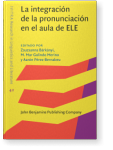Chapter 17
La enseñanza de la pronunciación del español en la clase con hablantes de herencia
Este capítulo se centra en la enseñanza de la pronunciación a un grupo de estudiantes muy
específico: los hablantes de herencia, cada vez más presentes en las aulas de español como lengua adicional, pero con
unas necesidades diferenciadas del resto. A partir de diversas caracterizaciones de los hablantes de herencia, que a
menudo son considerados hablantes nativos o bilingües de español pero cuya competencia es variable, presentamos sus
necesidades educativas en el aula atendiendo específicamente a su pronunciación, que suele corresponder a una de las
diferentes variedades del español, y revisamos la investigación reciente al respecto. Igualmente, establecemos una
serie de consideraciones pedagógicas y buenas prácticas sobre la enseñanza de la pronunciación a hablantes de
herencia, y también su papel en las aulas mixtas con otros aprendices de ELE.
Article outline
- 1.Introducción: Los hablantes de herencia
- 2.La enseñanza de la pronunciación del español y los hablantes de herencia
- 3.Investigaciones sobre la pronunciación de los hablantes de herencia
- 4.Buenas prácticas docentes en la integración de la pronunciación en el aula con hablantes de herencia
- 5.Conclusiones y líneas de investigación futura
-
Nota
-
Referencias bibliográficas
This content is being prepared for publication; it may be subject to changes.
Article language: Spanish
